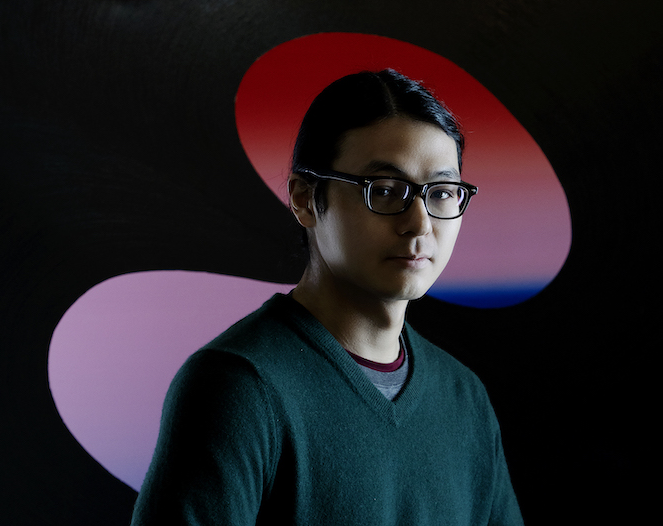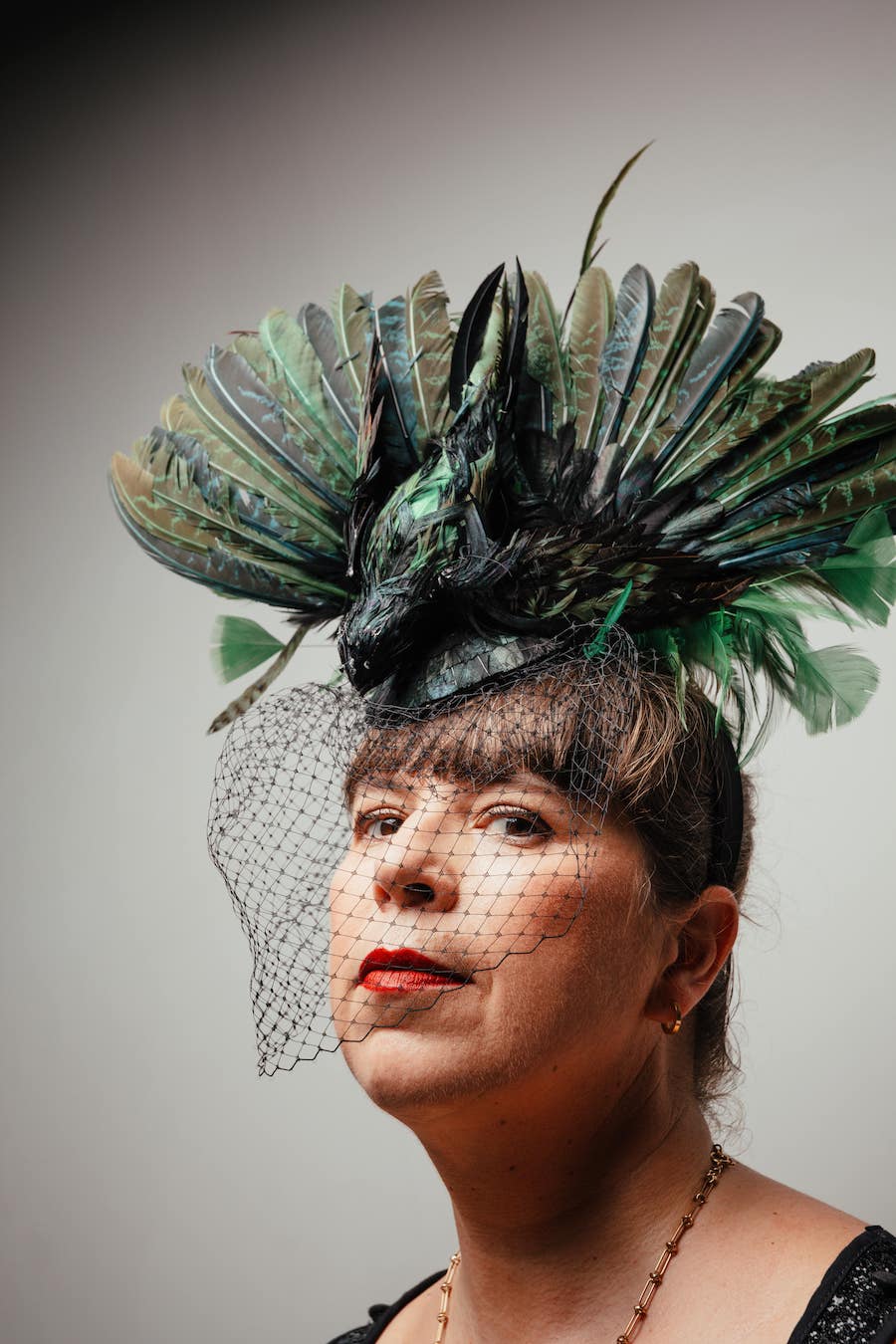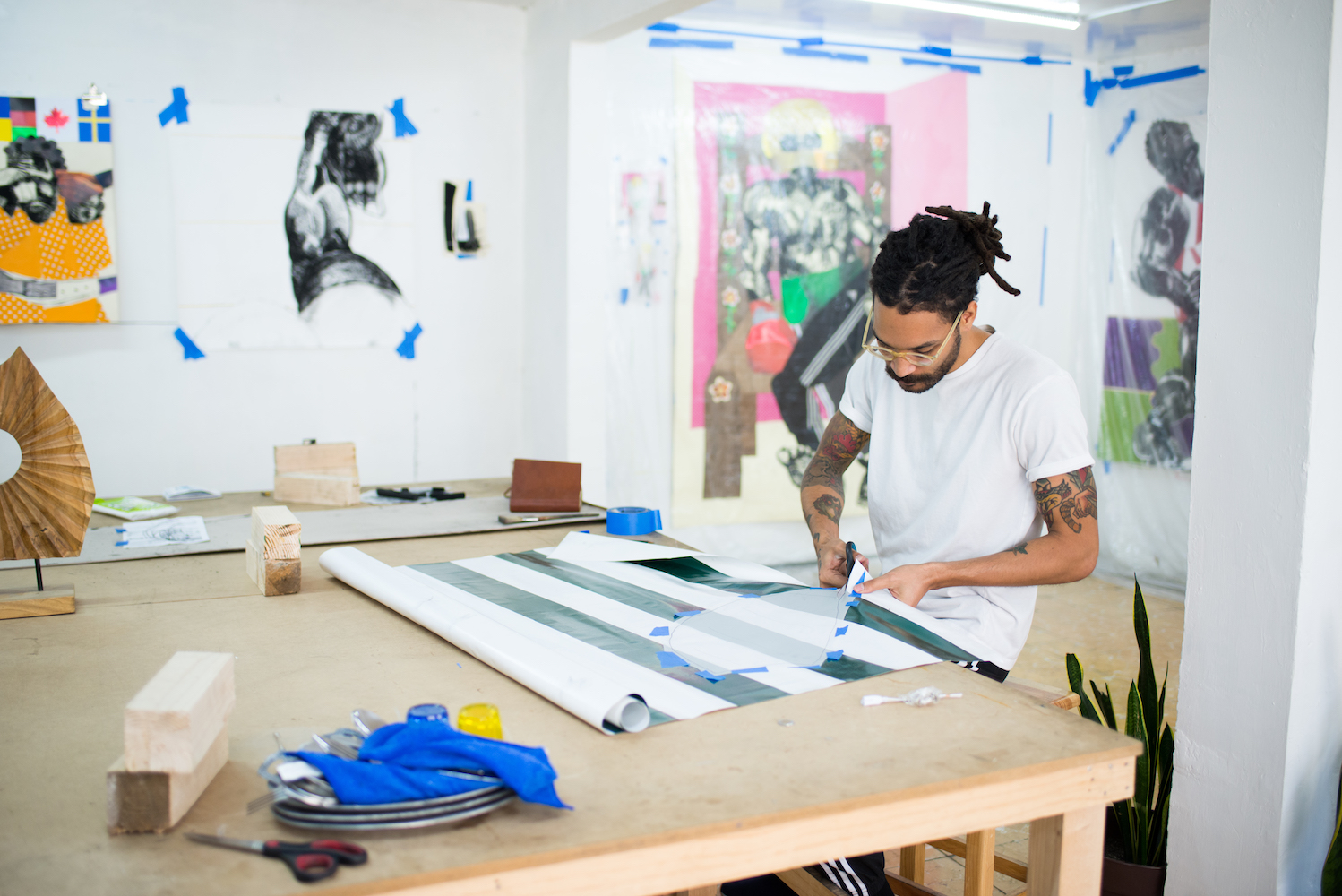Osamu Kobayashi’s work is a metaphor for how he sees the world. The Brooklyn-based artist creates abstract paintings with wide, curving brushstrokes, covering or revealing a colorful underlayer of gradients or bright tones. Some paintings suggest a face, a profile, the curve of a body, or a pair of eyes.
Whitewall visited Kobayashi at his studio in Gowanus to learn more about his practice and the dance required for his signature sweeping gestures. Our conversation took place just before his planned residency in Brescia, Italy. He’s now been there for a month, so we checked in via email to see how he was doing given the COVID-19 global pandemic and crisis in Italy. Kobayashi was kind enough to share his experience below.
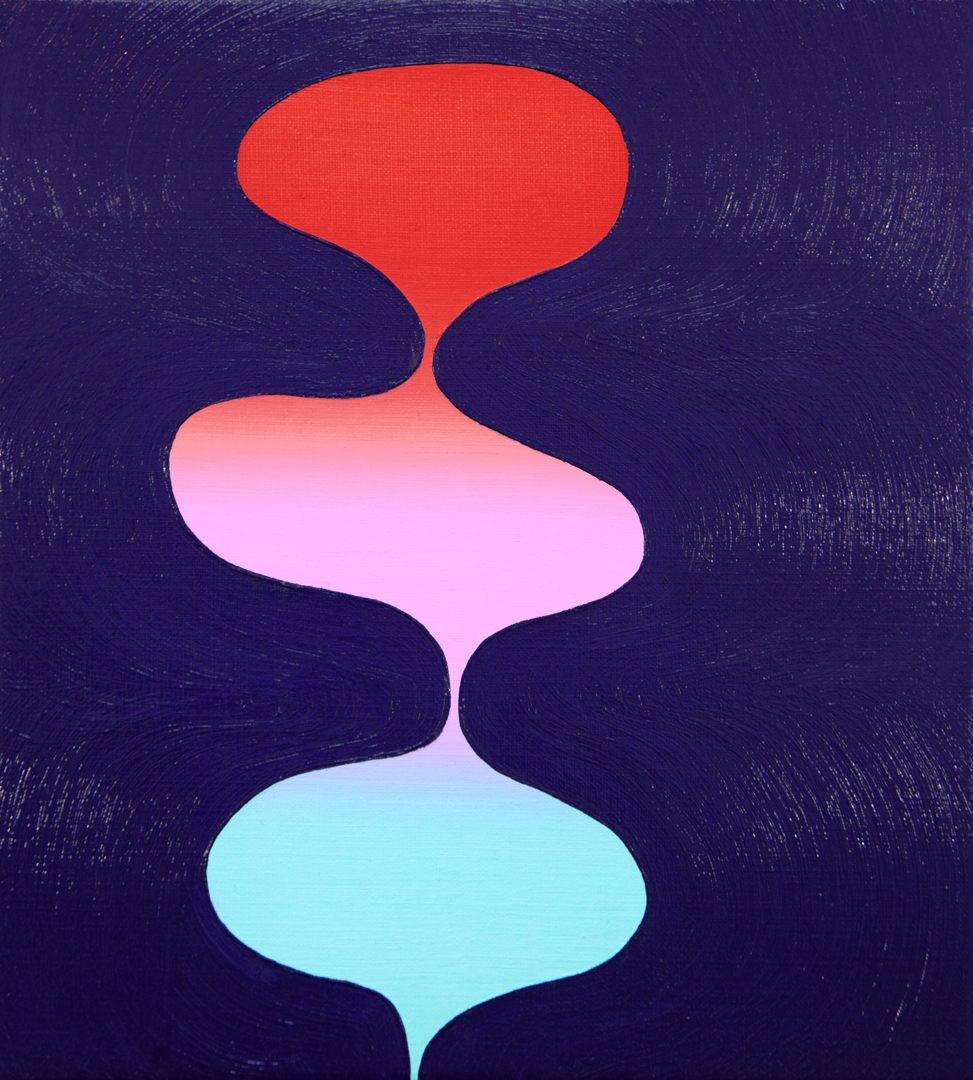
Osamu Kobayashi, “Wildflower II,” 2020, oil on linen, 12 x 11 inches, courtesy of the artist.
WHITEWALL: Can you tell us about your studio space?
OSAMU KOBAYASHI: It’s a 300-square-feet raw space with 12-feet walls, located practically under the Brooklyn Queens Expressway in industrial Gowanus, Brooklyn. The studio is within a larger suite shared with two other artists. Aside from essential studio furniture, tools, laptop, paintings, and good lighting, I don’t keep much of anything else around. From my window, I mainly see the underbelly of the expressway, the shaded eight lane highway below that, and the gritty two story Home Depot parking lot.
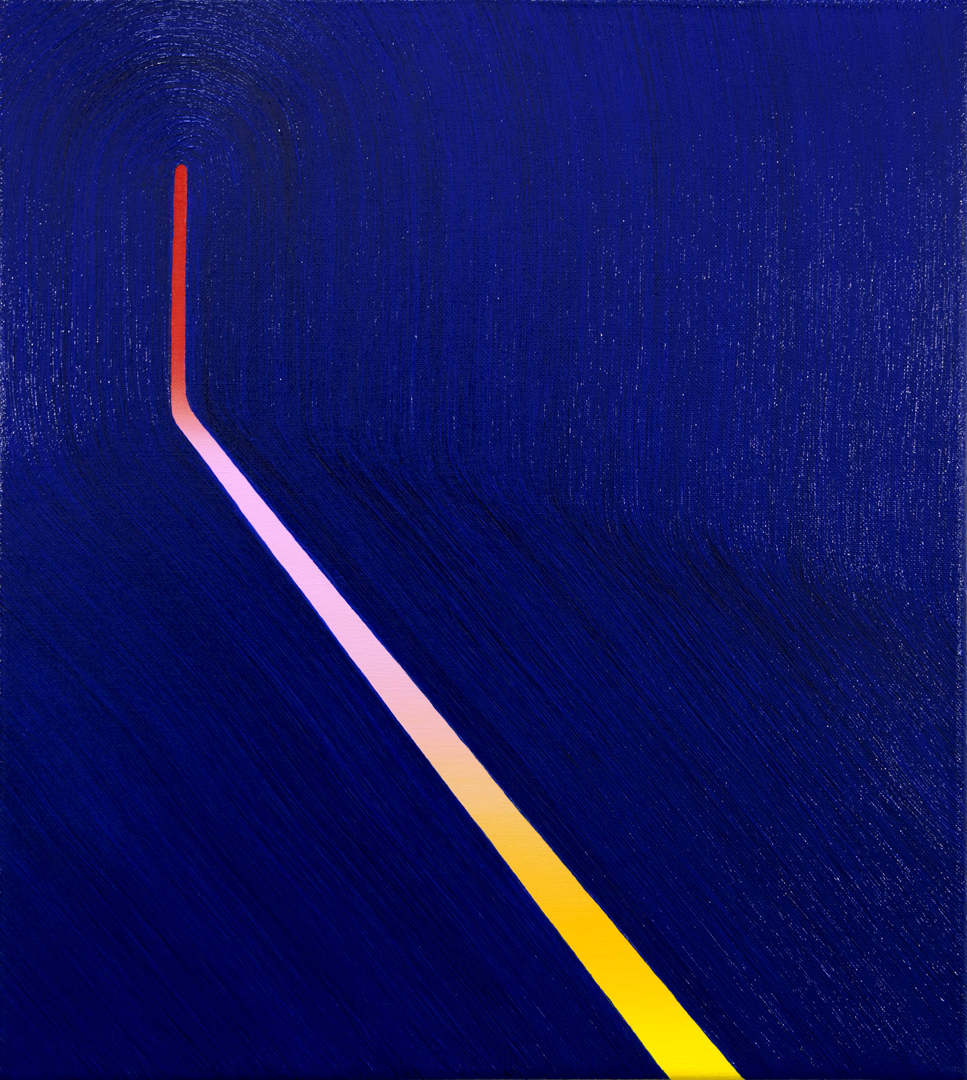
Osamu Kobayashi, “Slit,” 2020, oil on canvas, 18 x 16 inches, courtesy of the artist.
WW: How long have you been there?
OK: A year and a half, but it’s actually been much shorter since I was doing a residency in Dusseldorf, Germany for a third of that time. Before Gowanus, the longest I’ve stayed at one studio is just three years, and aside from residencies, it’s all been within Brooklyn.
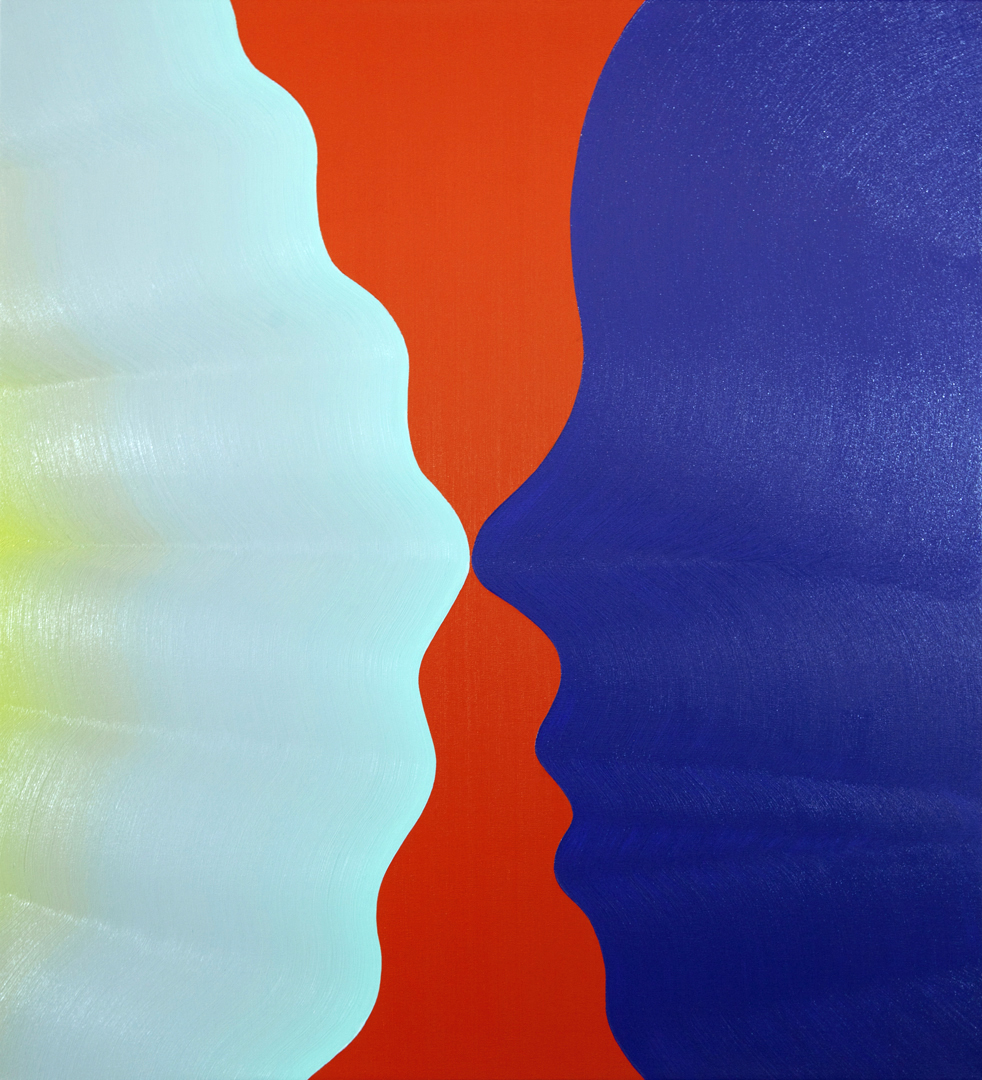
Osamu Kobayashi, “Reflection,” 2020, oil on canvas, 44 x 40 inches, courtesy of the artist.
WW: What’s a typical day in the studio like for you?
OK: I begin in the evening and work till midnight or later. I often start by sitting for long periods of time, day-dreaming and glancing at my paintings. Interspersed in my thoughts are ideas on what I should paint or alter in the work. If I’m in my head too much, I will start preparing canvases or tinker with parts of a painting that need fine tuning. If I have a good idea for a painting or just want to get my mind moving, I will start on a bunch of sketches.
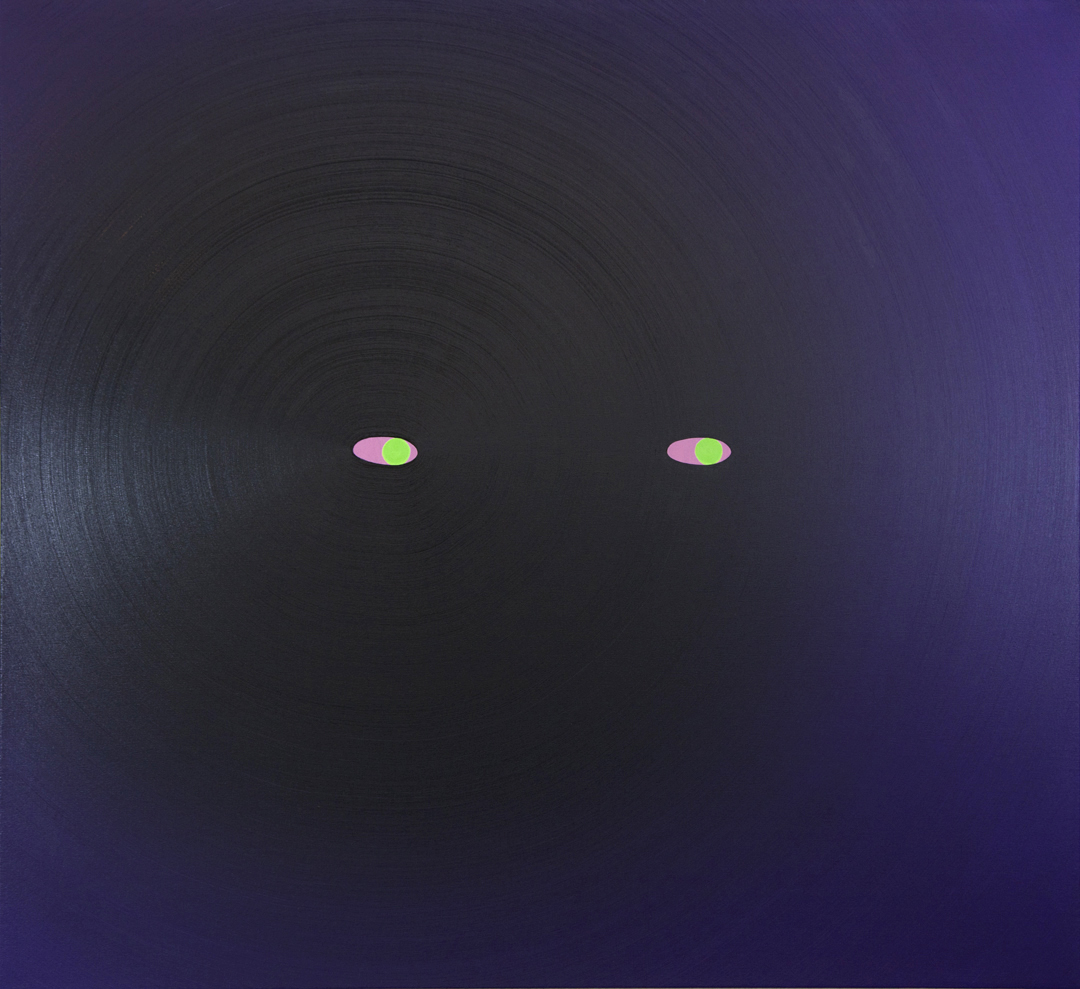
Osamu Kobayashi, “Black Eye,” 2020, oil on canvas, 44 x 48 inches, courtesy of the artist.
WW: Where do you usually start with a painting?
OK: I first start by penciling in where the strokes will go. It’s important to be precise because even abstract shapes need to be modeled so they can express the subtleties I want to convey. In my sketches I often make several iterations of the same shape to find the one that has the right feel and energy.
WW: Can you tell us about your process using a wide brush?
OK: The brushes are made of several utility brushes lined up onto a strip of molding and screwed into place. When making the larger strokes, I use my whole body to control how the brush moves. This can become somewhat of a dance, as I have to contort and move in various ways to achieve some of the gestures. I will then redo the stroke dozens of times until it’s perfected.
WW: You’ve said, “It’s important for me to capture something that feels improbable, to have the work hover between reality and illusion.” Why is that?
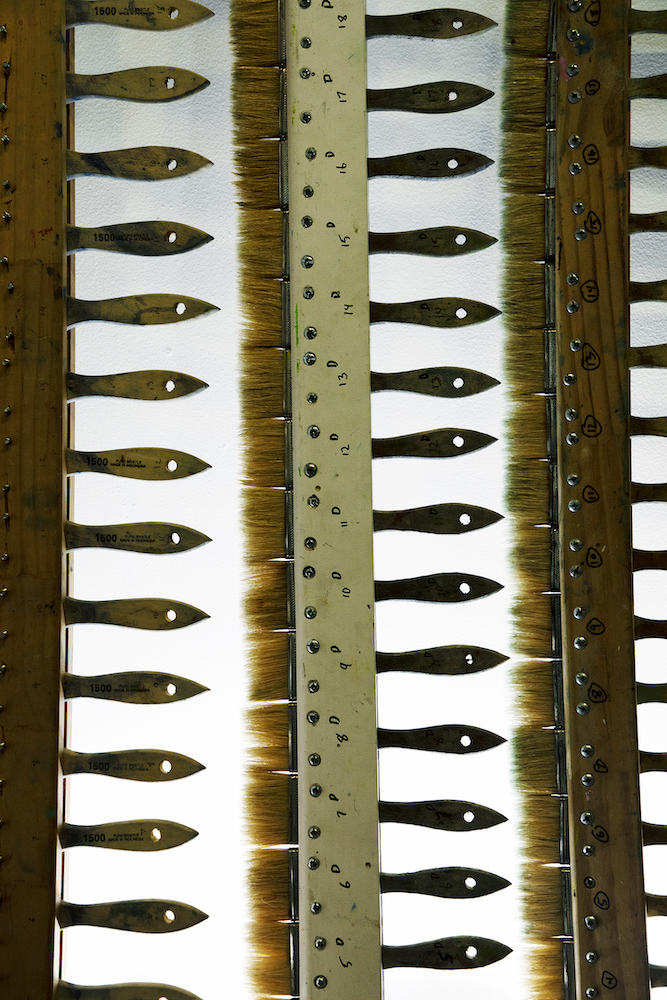
Photo by Steve Benisty.
OK: My work is a metaphor for how I see the world. The strokes I make, however precise, are not mechanical. It’s my hand making them, and its organic movement points to its humanness. After a stroke is made, I will go back into it with a fine brush and clean up the edges. The strokes are in an idealized state. I believe it’s an important part of life to believe that the improbable exists, even if it’s just in our minds.
WW: How do you know when you’re finished with a painting? That it’s successful?
OK: It’s really a gut reaction, but I rarely trust it initially. I usually need to come back the next day or let the works sit around in my studio for extended periods of time before I feel satisfied with them.
WW: Are there paintings you keep just for you?
OK: I’m a minimalist at heart and prefer not to have my work around, except for the ones I’m working on. If I do have some around, I rarely look at them unless someone asks to see them.
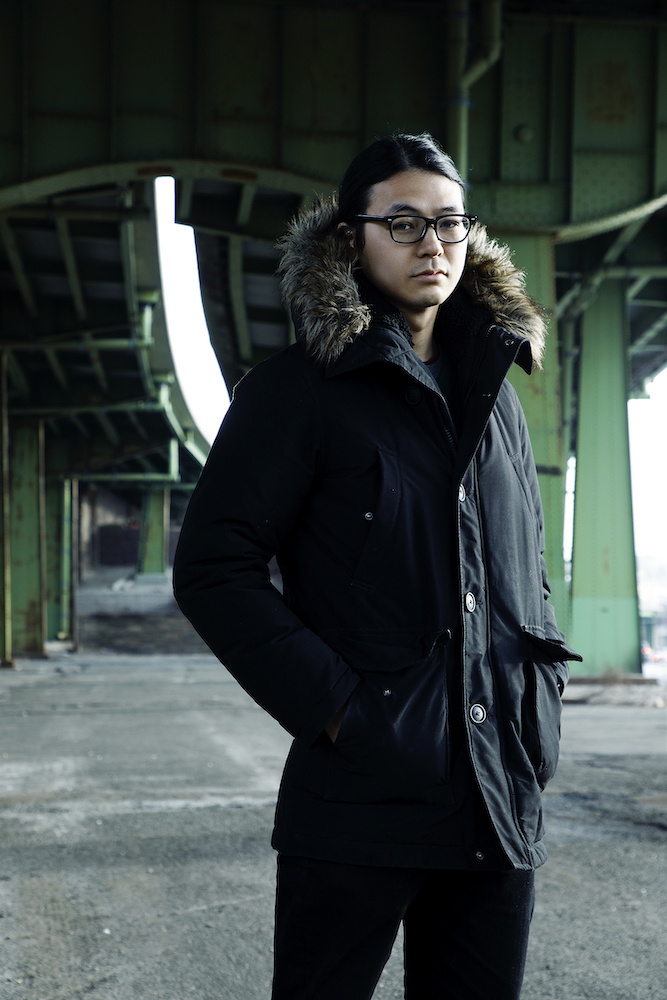
Photo by Steve Benisty.
WW: Can you tell us about creating the public, outdoor mural in your hometown in South Carolina? Are you interested in making more public pieces?
OK: When I was invited to create the mural, the organizers gave me complete freedom. The main issue I faced was what I would create given that I was mainly accustomed to oil on canvas. With oil paint, I’m able to play around with textures, but for a mural it became more about the image. In order to compensate, the composition had to become more complex. It was a great experience and I’d love to do more, but being a studio painter is more of who I am.
WW: We understand that you’re in Italy now for an artist residency. How are you doing?
OK: I’m currently one month into my three-month residency in Brescia, Italy. The purpose was to create work for a two-person booth at Art Brussels and a solo show with A+B Gallery. Brescia is located 50 miles from the epicenter of the Italian coronavirus epidemic. When I first arrived I was regularly going out to art openings and to nearby towns to look at frescoes. Now, because of the virus, all events have been canceled and the city is quarantined. I mostly stay indoors either at the apartment or my studio. Most stores and restaurants are closed, the streets are quieter, and the air is cool and ominous. It’s not uncommon to see people walking around wearing disposable gloves along with their masks. I’ve considered going back home to New York, however, I worry that the situation there could get worse than here. During the day the bells of various churches ring at odd intervals. I understand they signal the death of a church member. The bells have been ringing with more regularity the past few days.


